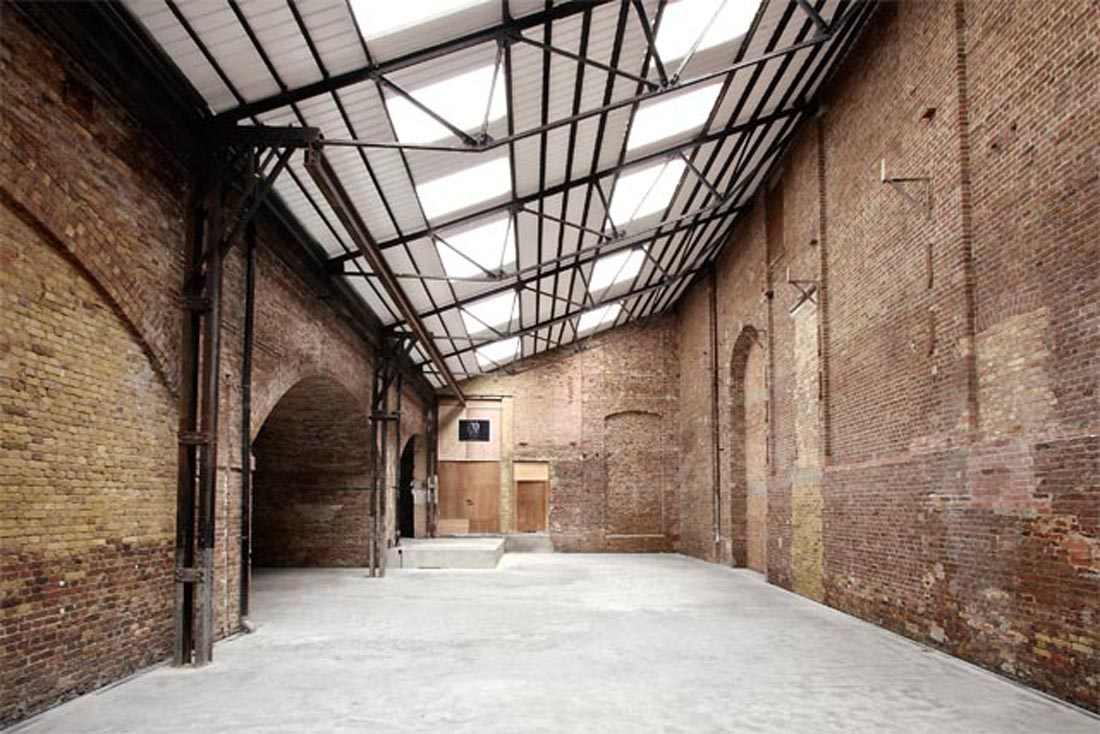The City of London Sinfonia has come up with a clever way of reaching out to new audiences. The CLoSer concert series started last Tuesday (22 November 2011) at Village Underground, in the heart of Shoreditch. The setting and the atmosphere were intentionally informal, with a glass of wine included in the price of the ticket, no real stage, pillows on the floor, and a bar open through the concert.
We were welcomed by some Philip Glass in the background while we grabbed our drink and waited for the orchestra to appear, perhaps a good appetizer to the opening piece, Shaker Loops by John Adams. Between each piece, the conductor/clarinettist Michael Collins would pause to chat about the next piece and his experience as performer. For example, he mention the “Bartók pizzicato” and got the violas to show us how it’s done before the concluding piece: Bartók’s beautiful divertimento for string orchestra.

atypical, exciting venue
(source: villageunderground.co.uk)
The informal setting was great fun, there should be more initiatives like this one. Notwithstanding the wine and the pillows, the audience still behaved “as expected”, listening in silence, saving claps for the right moments and waiting for the after-concert to visit the bar again. Perhaps this is because of our well rooted social expectations when it comes to “art” music, which are hard to shake off.
What I enjoyed the most was the after-concert. The players stayed for a drink, mixed with the audience, answered questions and talked about their instruments. I took the opportunity to ask a few questions to Michael Collins about the use of critical editions in the preparation of performances.
Perhaps unsurprisingly, it is becoming more evident to me that when performers use critical editions, they look for a clear reading text. When asked if conductors question editorial decisions, Collins said yes, often according to a performer’s notion of style. Diversion from the text, then, would mainly affect how something would be played (in terms of technique, colour, phrasing…), rather then involve the historical variance found in the apparatus, which is more likely to stay in the apparatus.
Recently, I also spoke with a professional music engraver who has contributed to the production of several critical editions of classical and romantic music. He had a similar opinion and explained how the short time that professionals often have to prepare performances fights against a more central role for the information in the apparatus. Moreover, rental scores and parts from critical editions typically exclude appendices and favour usability instead.
I’d add the oft-mention fact that the limits of the printed page make it hard to bring extra information to the foreground. Digital editions of music might have a better chance at it through, for example, interactive and flexible scores. Like James Grier said in his 1996 book The Critical Editing of Music, digital editions may have a role in rehearsals and performances (pp. 177-9), but interestingly, he suggests that the software should not allow to delete or alter any portion of the original text. Paraphrasing, it seems that editors have an ethical responsibility in making an accurate choice amongst variants (and reconstruction, and so on depending on repertoire, contingencies, etc.).
Needless to say, editions like those imagined by Grier do not really exist yet. However, since we’re talking in hypothetical terms already, what if digital editions also made historical variants and commentary readily available at the touch of the performers’ fingers? Would that make a difference during rehearsals? Or would other practical matters of getting things done still push this information in the background?
